Solidarity with the Mapuche political prisoners on hunger strike
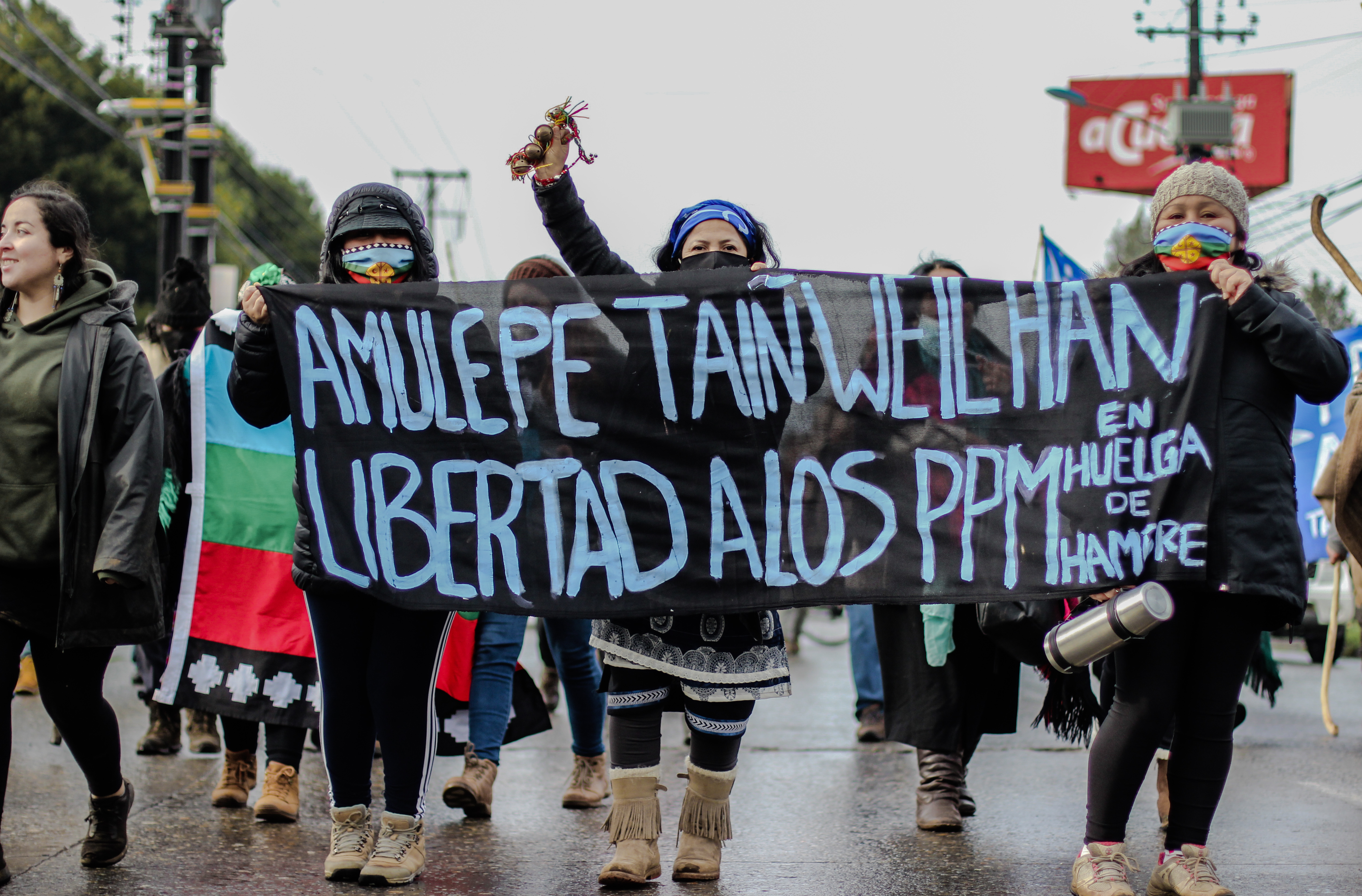
From the territorial struggle to the struggle for freedom. The Mapuche political prison as a counterinsurgency mechanism *
By Edgars Martínez Navarrete**
The violence of the Chilean State, the police repression, and the siege by landowners and multinationals are confronted by Mapuche political prisoners with solid and liquid hunger strike as a tool of resistance in their own bodies. Treated as “terrorists” and designated as the “internal enemy” by those who hold economic power, the strikers offer their newen (strength) to seek the freedom of their people.
Juan Jerónimo Lemus, Cherán, México
As of this writing, Mapuche political prisoners on hunger strike are living crucial hours. The community members in the Lebu jail have not eaten for 50 days and those of Angol jail for 113 days, and since August 24 they began a dry fast, perhaps the most extreme measure of pressure that a human being can take when locked in a prison. Although the Temuco prisoners have not yet joined this initiative, they have already been on a hunger strike for 42 days. It was thanks to this measure and to the sum of mobilizations around the world that machi (traditional spiritual healer) Celestino Córdova was able to twist the arm of the powerful and set certain minimum agreements, in exchange for ending his strike.
However, in all this time the Chilean government has given few signals to unblock the conflict with the rest of the strikers, a ridiculous situation because their petition, which basically seeks to regulate the prison terms linked to indigenous causes under the criteria of International Law, framed in ILO Convention 169 adopted by Chile more than a decade ago.
To understand this situation, it is necessary to explain the underlying reasons that motivated the political imprisonment of some community members. In the early morning of January 29, more than a hundred police officers violently raided five homes in the Elicura Valley, Lavkenche territory of Wallmapu. Between beatings, struggles, and transgressions against their families, Matías Leviqueo, Eliseo Raiman, Guillermo Camus, Esteban Huichacura, Carlos Huichacura, and Manuel Huichacura were taken as detainees. That same afternoon, all the defendants were held in preventive custody for allegedly participating in the death of a neighbor in the area.
At the formalization hearing, it became clear that the only evidence against them was statements provided by protected witnesses. In addition to being in contradiction to one another, the alleged witnesses failed to establish a link between the accused and the crime. Ignoring these legal gaps, the Peñi (Mapuche men) from the Elikura Valley were transferred to the Lebu prison, in the Arauco province, where they are currently on a hunger strike.
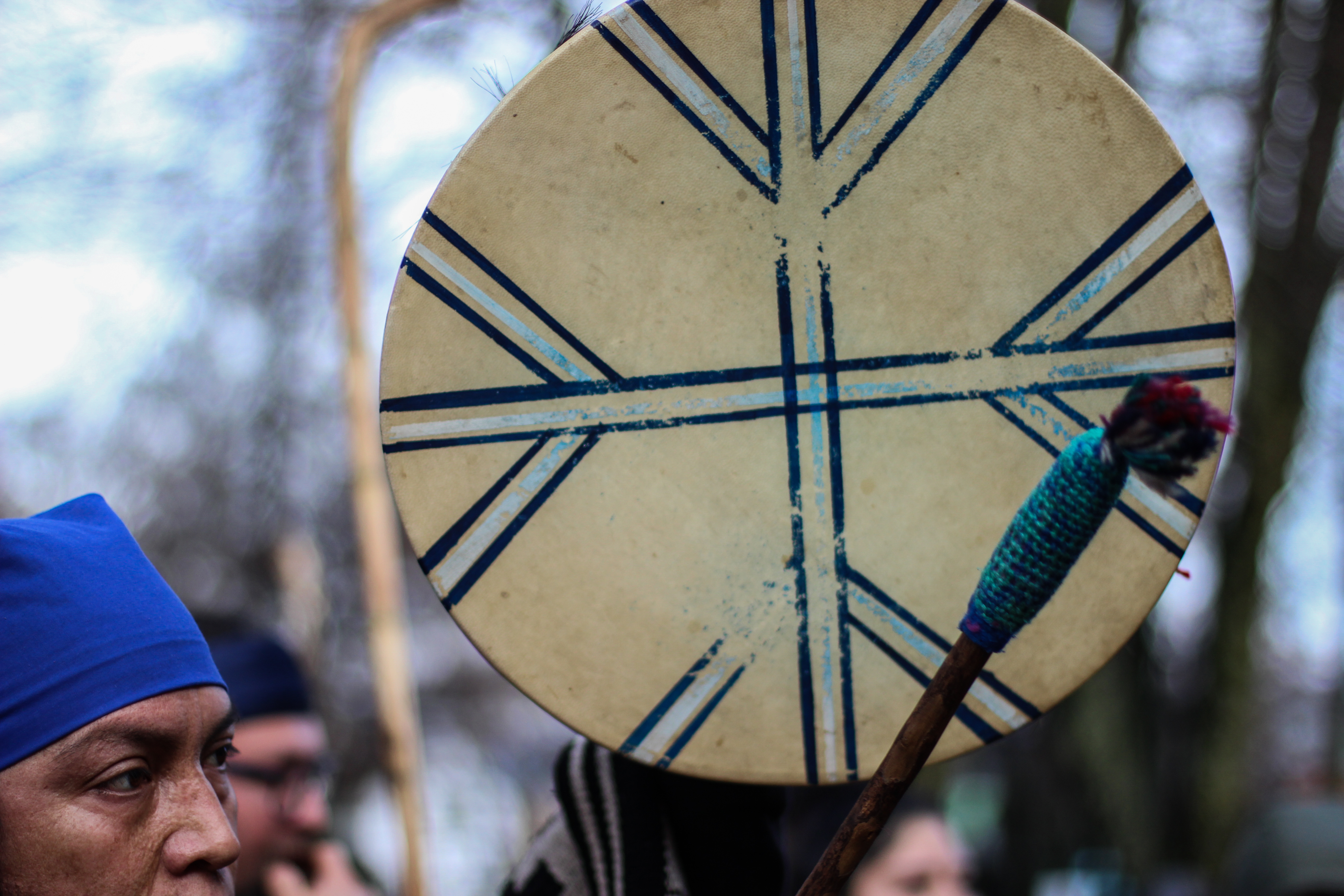
The weichan (resistance), the construction of the internal enemy, and counterinsurgency
During the ’90s, the emergence of the Mapuche movement, in general, and its autonomist line, in particular, put into a crisis for the first time the monocultural character that the Chilean Nation-State reproduced throughout its modern history. The prolonged time of the Creole Chileanization imposed by blood, fire, and law, and crystallized with the phrase of Augusto Pinochet “there are no Mapuche anymore because we are all Chileans” was categorically questioned by a people willing to transform their reality. The government’s flawed cultural promises could not contain Mapuche self-determination at the turn of the century.
The land recuperation actions gained strength, political organizations proliferated and the weichan (resistance), a historical tradition of Mapuche antagonism, became the praxis of the sectors that began to mistrust neoliberal institutions. The Lavkenche area sheltered the first manifestations of collective insubordination of this period: it gave birth to the Arauco Malleco Coordinator (CAM – Spanish acronym) and, with this, a legacy of rebellion that has branched out to the present day. The territorial claim processes in the Elikura Valley, for example, are the product of an entire Lavkenche generation raised and trained in this cycle of insurrection.
In this context, seeing their interests threatened in times of ascendancy of the “Chilean miracle”, the ruling classes rearranged their power structures to face the resurgence of a new “internal enemy”. The Mapuche in struggle became to be portrayed as the racialized terrorist. Criminalization appeared to be the most effective way to deal with this “innovative” threat. Thus, what we could characterize as a new cycle of “Low-Intensity Conflict” is inaugurated, that is, a counterinsurgency scenario based on passive and coercive mechanisms of submission, co-option, exploitation, and persecution of the enemies of the neoliberal model.
A low-intensity conflict that conceals a counterinsurgent and neocolonial onslaught on the Mapuche people in weichan and that takes place on three interconnected levels. In the first place, through an extensive mechanism created by the sectors of power to corner the resistance, making possible accumulation by dispossession and the expanded reproduction of capital. At the continental level, this is reflected in the Initiative for the Integration of Regional Infrastructure in South America and the Trans-Pacific Treaty, among others. And at the national level, in the Araucanía Plan, in the attempts to modify the Indigenous Law and in the Modernization and Expansion of the Arauco Plant project. These economic-political initiatives have three objectives: the definitive opening of the Wallmapu to transnational corporations, the looting and pillage of natural resources, and the submission of the territorial protest. In short: the real subsumption of nature, the spiritual, and the political capacities of the Mapuche resistance to capital.
However, although the coercive logic of these plans comes from a transnational matrix mobilized by the interests of contemporary imperialism, their operational capacity resides in the deployment of a multiplicity of national pivots in charge of affirming the Chilean doctrine of “national security” against this new “internal enemy”. At this second level are the numerous persecution and criminalization plans that the State has promoted during the last two decades to weaken the Mapuche autonomist movement and accuse it of “terrorism”. The “Operation Paciencia” (2002 – 2004) aimed at dismantling the CAM, the ridiculous “Operation Huracán” articulated by the media to “behead” Weichan Auka Mapu and once again the CAM and “Operation Andes” (2017), part of the previous, intended to link the Mapuche weichan organizations with arms trafficking and with political-military structures in various territories. These are just a few of the known plans of this level of counterinsurgency.
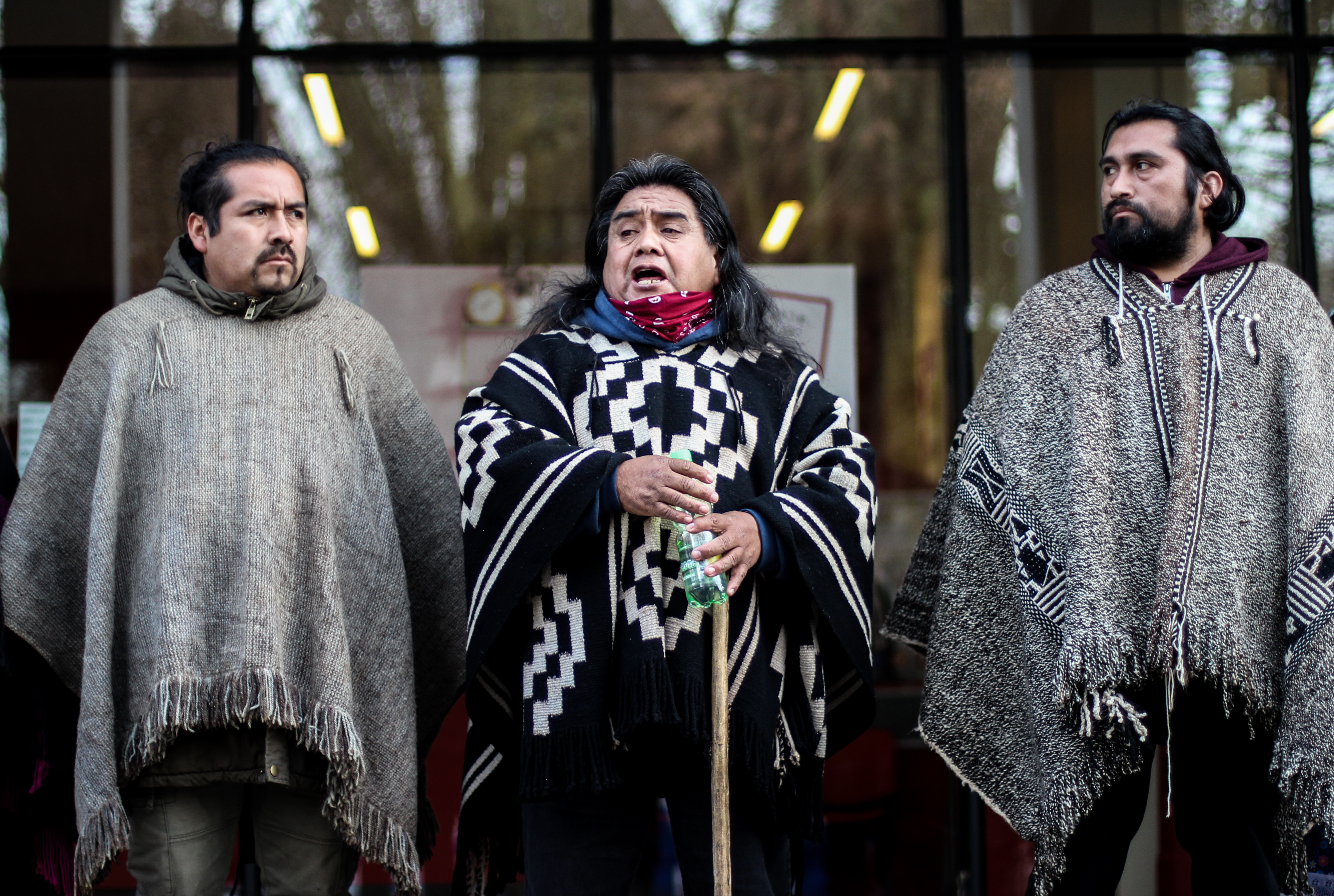
The construction of the figure of terrorism as a strategy of large landholders
But the “fight against terrorism” is also the obstinate aim of the landowners, forestry entrepreneurs, and farmers’ associations of the regional extreme right that today inhabit the Wallmapu. The heirs of settler colonialism, benefited by the territorial dispossession, displacement, and racial subordination of the Mapuche, persist in justifying their historical presence, their properties, and their investments under the defense of a presumed nationalist white supremacy associated to a kind of rule of law. For this, in addition to constructing the idea of the “terrorist Mapuche”, they have organized into paramilitary self-defence groups that threaten to intensify the violence generated by themselves and their ancestors.
Specifically, for the Lavkenmapu, and for the Elikura Valley, this counterinsurgency plan is evidenced in the systematization of data that the Mapuche Aukin newspaper brought to light under the headline “The new repressive plan for the Lavkenche strip.” This document summarizes the measures that the government, in dialogue with the “main” productive sectors of the area, would allocate to the south of the province of Arauco in order to mitigate the rates of “rural violence”, a media category used in reference to the lavkenche resistance. The creation of new sub-police stations, the arrival of 100 troops to the area, the permanent presence of police checkpoints, the arrival of 16 all-terrain armored cars, a helicopter, and the donation of state-of-the-art drones would be only part of the repressive plan with which the lov (social Mapuche structure) and communities that defend the Lavkenmapu will be persecuted.
The most specific way in which this low-intensity conflict is manifested is in the imprisonment of Mapuche political activists. It is not a secret that Latin American prisons have color, as the anthropologist Rita Segato (2007) points out. But it is not just that: the judicialization of indigenous protest also has color. During the last three decades, in Chile militants, leaders and cultural authorities of the Mapuche people have been systematically subjected to lengthy judicial processes that generally end in acquittals or dismissals due to lack of evidence.
However, these cases, famous for their technical inconsistencies and legal gaps, are not necessarily intended to convict. Rather, they seek to neutralize Mapuche fighters, fatigue the resistance movement, and force it to contest the government’s agenda.
Therefore, we can observe that the political prison, although it generates cohesion and certain levels of socio-community agglutination even between organically dissimilar sectors, pressures the support movement to focus on immediate objectives, generally neglecting strategic ends. In this context, the liberation of prisoners or the improvement of their prison conditions are, with good reason, indisputable priorities. Those who profit politically from such a situation are the ruling classes by “maintaining” the levels of Mapuche insubordination atomized to a seemingly ephemeral objective, but which requires the deployment of a wide repertoire of alliances, negotiations and protesting practices. In turn, actions in support of political prisoners and, particularly, around hunger strikes are emotionally and materially exhausting processes for a movement that is not characterized by having extensive networks of solidarity beyond the Wallmapu or resources in abundance.
However, there are moments of rupture in which the Mapuche movement sets the pace of the agenda and forces the government to negotiate, as has happened in recent weeks where the increase of sabotage actions, occupations of public spaces, and other pressure actions have broken the indifferent stand of the government.
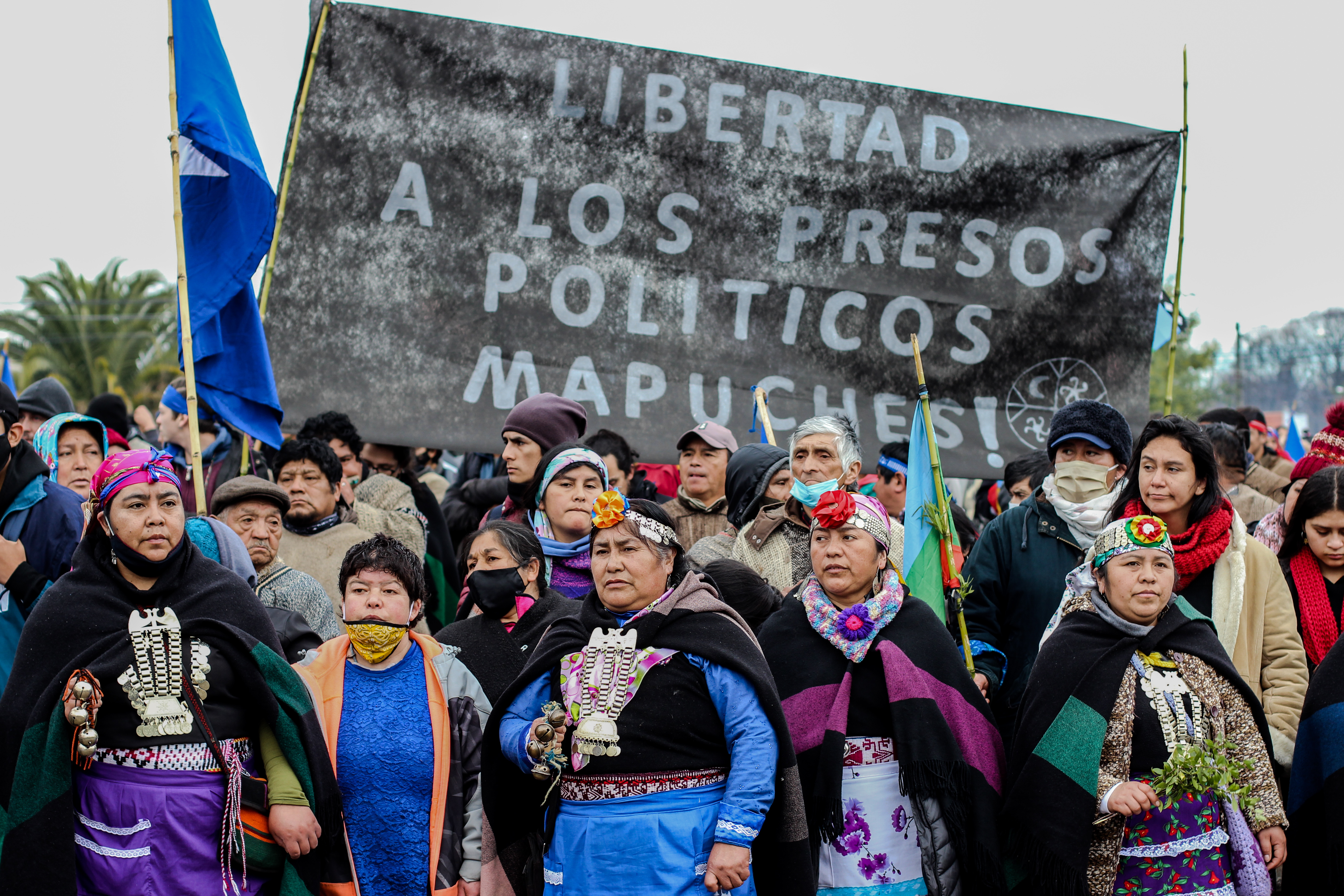
Cruelty as a counterinsurgent biopolitical device
Prison and hunger strikes constitute disciplinary mechanisms on the individual and their bodies, which are extended as a way of inflicting pain to the families and close circles who accompany this process. In addition to the liquid and dry fasts that leave chronic consequences in the body of those who perform it, there is also the suffering produced by the arrests, the raids, and the long judicial processes that lead to prison.
In the last three decades, hundreds of women, men, the elderly, boys, and girls have suffered the violence of these counterinsurgent biopolitical mechanisms, which leave indelible marks on their lives. At their young ages, many pichikeche (boys and girls) have spent their childhoods in militarized territories, between police harassment and the gloomy corridors of the Courts of Justice. In this same logic, and without ignoring the community aid that is usually activated, it is important to mention that it is generally women who carry a large part of the effort in these contexts since in addition to working full time in the rudimentary camps erected outside the prisons, they must take care of the daily work in their homes and the multiple tasks in their respective lov and territories.
Despite all this, the coercive action of the power structure composed of Chilean and transnational elites have not been able to break the collective will of the strikers. The Mapuche political prisoners are not fighting for an individual demand: the hunger strike that risks their lives seeks to regulate a minimum legal framework and to raise awareness about the indigenous political prison in Chile.
From their cells, Mapuche political prisoners face all the repressive actions and levels of the counterinsurgency. They fight the violence of economic consortia, political structures, judicial powers, and repressive apparatuses with eagerness (shouts of encouragement), ceremonies, and small displays of solidarity. It is an unequal contest, without a doubt, but within all the heartbreaking of this process, the Mapuche political prisoners embody the greatest possible expression of human dignity: they give up their vitality and their newen (strength) to seek the freedom of their people.
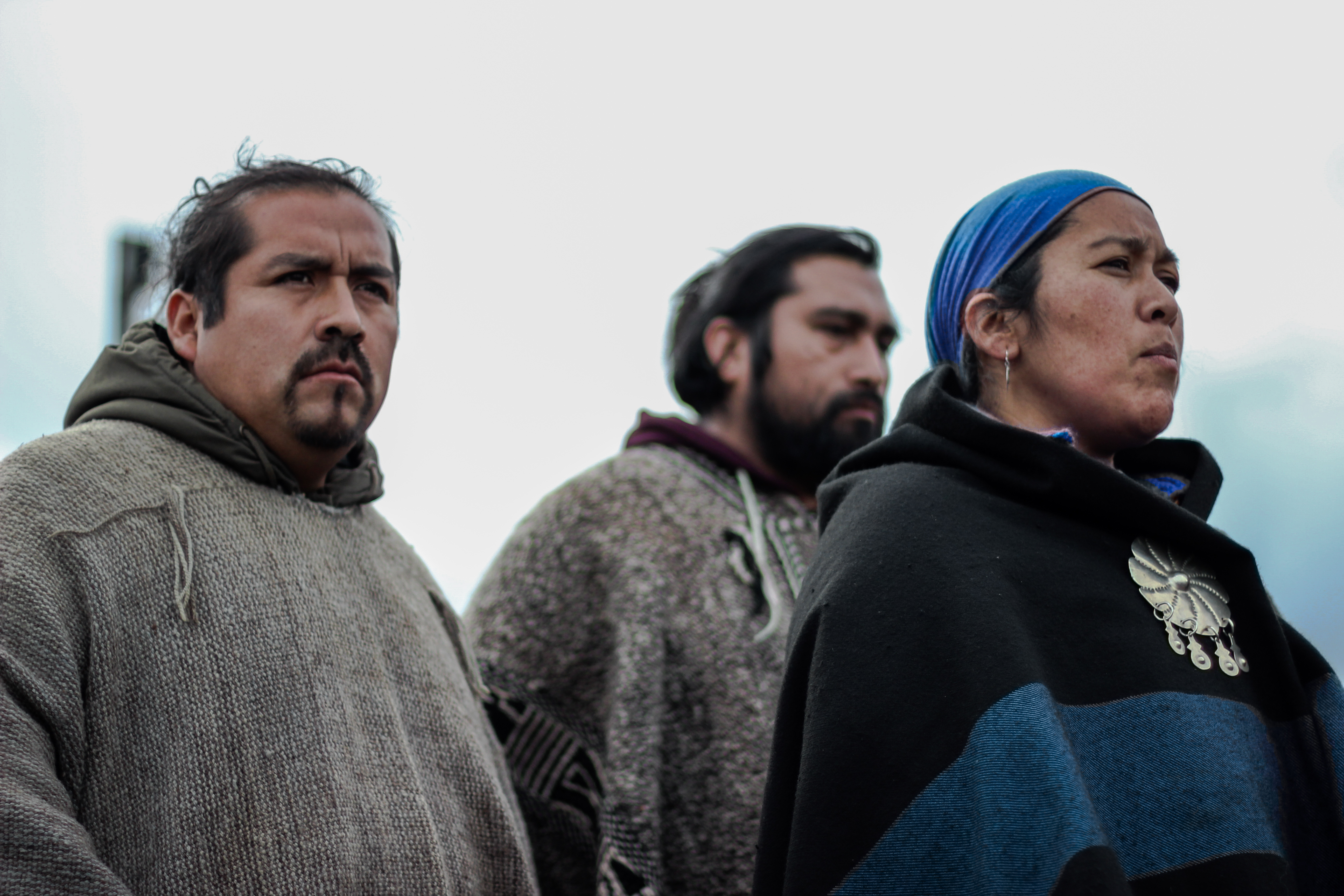
* Text in honor of the dignified resistance of the Mapuche political prisoners on hunger strike in the Lebu prison: Matías Leviqueo, Eliseo Raiman, Tomás Antihuen, Guillermo Camus, Esteban Huichacura, Carlos Huichacura, Manuel Huichacura, Cesar Millanao, Orlando Saez, Damian Saez, Robison Parra, Oscar Pilquiman. At the same time, I dedicate it with affection to Kelüray and Külapañgi, seeds of rebellion in the Lavkenmapu.
** Edgars Martínez Navarrete is a militant of the Mapuche autonomist cause, a member of AUKIN and a candidate for a doctorate in Anthropology from CIESAS-CDMX
Translated by: Claudio Ekdahl
